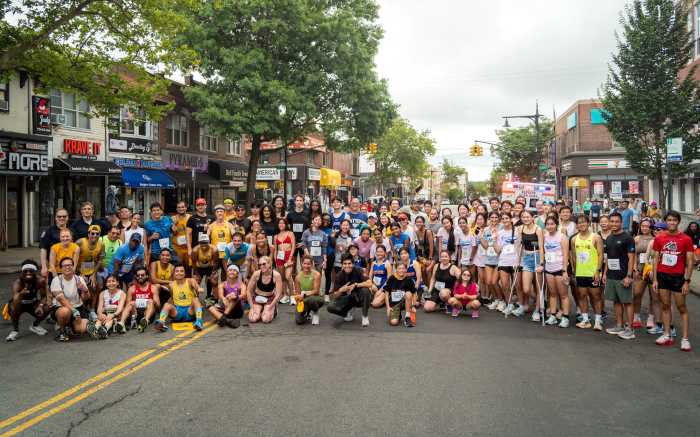It’s a heady time to be Italian-American in New York City.
We’ve got a mayor and governor of Italian descent, and, so far, nobody’s made us take down the Fuhgeddaboudit highway signs in Brooklyn. But there still remains a highly visible slight to the good name of Italian-Americans everywhere: the misspelling of the Verrazano Bridge.
The architectural wonder connecting Brooklyn and Staten Island is the longest suspension bridge in the country, completed in 1964 and named after Italian explorer Giovanni da Verrazzano, who mapped the Atlantic coast and New York harbor and whose name in the historical record is written with two z’s.
But the signs on the bridge only include one. This got under the craw of Dyker Heights resident Robert Nash, who created a petition to put the z back in Verrazzano, as was reported by the Brooklyn Paper.
Catch some z’s
The misspelling appears to be a typographical error from the bridge’s early days.
Master planner Robert Moses championed the bridge and reportedly favored a different name altogether. Ultimately Verrazano won out, with the error, and signs with the single z were never changed.
Changes do not appear to be on the horizon (the MTA declined to comment). Signage renaming the Triborough Bridge cost millions, and the color scheme of the NYC subway system has been fairly constant through history for the same monetary reasons, in case you were thinking about asking for red, white and green.
It’s a treasured Italian-American stereotype to get hot and bothered about being ignored and persecuted. We’re quick to defend perceived slights to honor: “People push Italians and Italian-Americans to the side! Sign this petition; let’s unite as proud Italian-Americans!” says Nash’s petition. Sometimes these tendencies result in things like this guy, or fairly un-nuanced discussions of Columbus Day.
But name-misspellings are a grand Italian-American tradition, from Ellis Island to the Bay Ridge business owners who shrug and go with the city-suggested Verrazano. In that sense, the bridge is the perfect example of the Italian-American story — a footloose paizon who put down some roots on this side of the Atlantic and got Americanized on the way.
At this point, we have other concerns. As writer and Bay Ridge native Michael Conforti told me, “People care that the bridge already costs like fifteen bucks to cross, and that’s with only one z. Just imagine with two z’s.”
Who’s neck?
For those looking for further spelling controversies, look no further than Throg(g)s Neck in the Bronx.
The name originally comes from John Throckmorton, who arrived from Connecticut and was given permission by the Dutch to settle in what is now Throggs Neck in 1642, according to Angel Hernandez at the Bronx County Historical Society.
Clearly the name mutated over the years. But the community largely called it Throggs Neck, with two g’s (the neighborhood association still does).
Then our friend Robert Moses came to town, building the Throgs Neck Bridge. Hernandez says the g was dropped after Moses decided that two was too long for signs — a story he heard from the late Bill Twomey, a longtime Bronx resident and historian.
Hernandez, unlike Nash, the Verrazzano petitioner, is of two minds on the spelling (there are “enough g’s to spare…”).
As for Moses, “there was some good and some bad,” Hernandez says. Moses was an “agent for expansion” of the city — it was the destructive way the city expanded that was sometimes a problem.
Others feel similarly. In fact, Robert Moses’s name was pulled off the Robert Moses State Parkway on Thursday. Some local legislators up by Niagara Falls felt Moses was not well-known enough to add tourism value, in addition to the negative connotations of his work.
A different solution? They could have called it “Mose.”
This is amExpress, the conversation starter for New Yorkers. Subscribe at amny.com/amexpress.

























